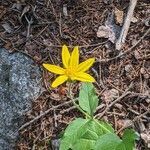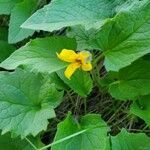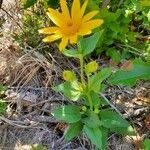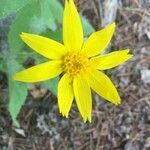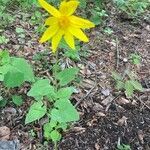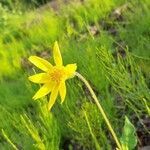Rhizomatous perennial 1.5–4.5 dm, hairy or glandular or both; basal and lowest cauline lvs conspicuously petiolate, with strongly cordate base, to 11 × 8 cm, generally dentate; cauline lvs reduced upwards, becoming sessile; heads 1–3, the disk 1.5–2.5 cm wide; invol 12–20 mm; rays 10–15, 2–3 cm; pappus white, strongly barbellate; 2n=(38), 57, 76 (95), the polyploids apomictic. Dry woods; Keweenaw penins., Mich.; widespread in the w. cordillera. June, July. (A. whitneyi)
